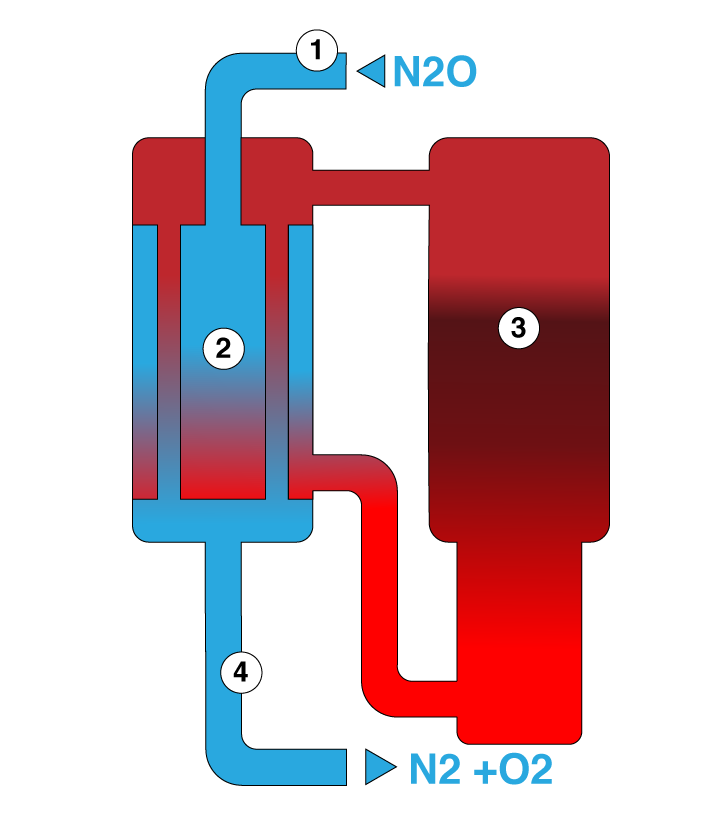Nitrous Oxide Destruction
Understanding the Climate Impact of Nitrous Oxide
Nitrous Oxide is one of the most climate-damaging gases routinely released into the atmosphere and destruction is the most effective method of mitigating its impact.
Used daily in healthcare for pain relief and anaesthesia, Nitrous Oxide (N2O) is often vented directly into the air after use. Despite its essential role in medical care, its environmental consequences are severe. Nitrous Oxide has a global warming potential nearly 300 times higher than carbon dioxide and remains in the atmosphere for over a century. It also contributes to ozone layer depletion
The Purpose of Destruction
Destruction of Nitrous Oxide involves capturing the gas at the point of use and breaking it down into harmless Nitrogen and Oxygen before it can reach the atmosphere. This approach preserves clinical functionality while eliminating the environmental cost.
Catalytic Destruction Process
Gas capture – Exhaled Nitrous Oxide is collected using standard hospital breathing systems or central evacuation units.
Pre-treatment – Moisture and particles are filtered out.
Catalytic conversion – The gas passes through a heated catalyst, which breaks it down into Nitrogen (N2) and Oxygen (O2).
Emission – The neutralised gas is safely released into the air.
Practical Solutions in Clinical Use
In response to the growing need for responsible Nitrous Oxide handling, Medclair has developed systems that enable healthcare facilities to capture and destroy exhaled Nitrous Oxide effectively. These solutions are currently in use across hospitals and clinics, offering both central and mobile configurations to meet different infrastructure requirements.
Medclair’s Mobile Destruction Unit
Environmental and Operational Benefits
Catalytic destruction of Nitrous Oxide provides immediate and long-term advantages:
Substantial reduction in CO2-equivalent emissions, contributing to hospital climate targets.
Improved air quality for staff, particularly in maternity wards and surgical environments.
No disruption to clinical workflows or patient outcomes.
Support for national sustainability reporting and certification.
Economic efficiency – In many cases, the continued use of Nitrous Oxide—made environmentally responsible through destruction—can reduce the need for sedatives that require post-operative monitoring in wake-up rooms. This can free up both personnel and recovery space. It also helps avoid more invasive procedures that place additional strain on staff and resources.
The technology enables hospitals to continue using Nitrous Oxide where clinically appropriate, without compromising environmental responsibility.
Conclusion
Nitrous Oxide is a necessary part of modern medical care, but unmanaged, it remains a significant environmental threat. Catalytic destruction offers a clear and effective solution. By implementing destruction systems, healthcare facilities can maintain high-quality care while taking meaningful action on climate emissions.






